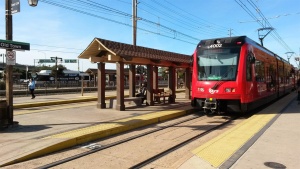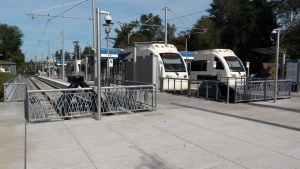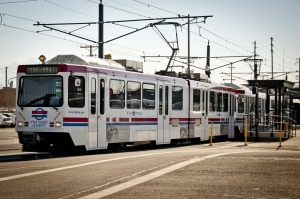Light rail
Light rail is a form of rail transit common in major cities throughout the United States. Light rail is considered to be a smaller form of urban rail compared to heavy rail (subway lines) with lower capacity and reduced costs.
- Light rail can operate on street level, railroad corridors, freeway medians, or subways. Heavy rail or commuter rail have physical and technical constraints that prevent these trains from operating on street. The ability to run on street reduces cost to implement rail in downtown areas.
- When operating on street, light rail behaves much like a streetcar. When operating underground, it behaves much like heavy rail.
- Compared to streetcars, most light rail systems operate multi-car trains with much higher capacity.
- Depending on station spacing, operating speed, and length of the system, light rail can provide local transit, regional transit, or both.
- Most light rail systems tend to operate as a part of the local bus system. Fares and passes for the bus system also apply on light rail.
- Most light rail systems are electrified. Some systems may use rail cars with diesel engines (which may be considered commuter rail depending on size and operating environment).
Accessibility for light rail varies between the systems. Many of them provide level boarding at all doors. Some of them require push button to deploy ramps. Some older light rail systems use wayside ramps (or mini-high platforms) to provide accessibility to the first car of the train.



